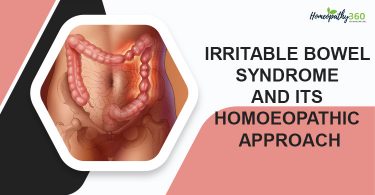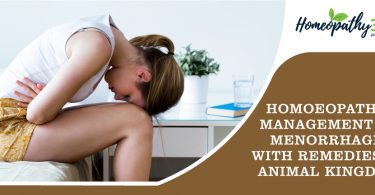Abstract
The face is the mirror of the mind, and eyes without speaking confess the secrets of the heart. [1] Signs & symptoms are the first and prime hint for any disease to be diagnosed prior to any specific investigational (if required) conclusion. Moreover objective signs & symptoms play an imperative role in the diagnosis. Examining the nails itself reveals many hidden disease conditions and an important element of either local or systemic examination of any patient. Based on observation of the nail changes is one such clue to make any diagnosis (provisional/definitive). Good, healthy nails are objects of admiration. They also protect the terminals of the limbs and the delicate tissues contained at these sites. The appearance, shape and color of our nails not only reflect the status of our health but can give valuable information about the underlying disease condition. This article is a small attempt to help the profession in gathering information on nail changes and their importance in both diagnosis & treatment and not in any approach to understate our basic prescribing guidelines.
Introduction
The nail plate is a keratinized structure which is continually growing through life. Its germinative cells are located in proximal portions of the nail bed and underneath the nail fold. The white lanula is the visible matrix. The nail –bed beneath the nail plate contains longitudinally arrayed vascular loops, which is the basis of longitudinal hemorrhages in the nails with disease or after trauma. The lateral nail and the proximal nail fold (epionychium) protect and seal the bed and plate from the environment and organisms. [2]
The nail plate grows continuously during life. Finger nails grows faster than toe nails, mean growth being 3mm/month for fingernails and 1mm/month for toe-nails. Complete replacement of fingernails therefore requires about 100-120 days (6 months). The total regeneration time for toe nail is 12-18 months. As consequences of the nails slow growth rate, diseases of the nail matrix become evident only after a considerable delay and require a long time to disappear after treatment the rate of nail growth varies among different individuals and among different digits of same individual. The nail growth rate is slow at birth, slightly increased during childhood and usually reaches maximum in 2nd and 3rd decades of life. Then, after the age of 50, it decreases sharply. There are few factors which alter normal nail growth and described below- [3]The cuticle is stratum corneum extending from the proximal nail fold. The prolife reactive component of the matrix detemines the thickness of nail and its growth rate .The nail bed is beneath the matrix and the hyponychium. As distinct from other proteins of the integument there is no subcutaneous tissue in the dermis under the nails which allows this tissue to reflect changes in serum albumin clinically as painless of the nail bed in anemia or the half and half nail in renal disease. [2]
| SLOWER GROWTH | FASTER GROWTH | ||
| Physiological | Pathological | Physiological | Pathological |
| Females | Severe infections | Males | Hyperthyroidism |
| Toes | Prolonged illness | Fingers | Pregnancy |
| 1st and 5th digits | Anti-metabolites | Dominant hand | A-V shunts |
| Non-dominant hand | Hypothyroidism | Summer | Biting |
| Winter | Malnutrition | Day | Typing |
| Night | CCF | Third digit | Piano playing |
Other common nail disorders and their significance
- Clubbing of nails- there is exaggerated longitudinal curvature and loss of the angle between nail and nail fold (i.e. no dip). Also the nails feel boggy. The cause is unknown but may be due to increased blood flow through multiple arteriovenous shunts in the distal phalanges. [3] Clubbing may be hereditary, idiopathic, or acquired and associated with a variety of disorders, including cyanotic congenital heart disease, infective endocarditis, and a variety of pulmonary conditions (among them primary and metastatic lung cancer, bronchiectasis, lung abscess, cystic fibrosis, and mesothelioma), as well as with some gastrointestinal diseases (including inflammatory bowel disease and hepatic cirrhosis). [12]
2. Tinea unguium (or fungal infection of nail) – this commonly accompanies tinea manuum and pedis. All the nails are rarely affected. Involved nails become thick, fragile, yellowish or greyish brown in color and develop subungual hyperkeratosis (accumulation of soft keratin under the nail plate). [3]
Miasmatic expression of nails
About miasm, Dr. C. Hering in his introductory remarks in 3rd American edition of Organon thinks it (i.e. miasm) not of vital importance so long a physician holds the principal tools of the master & the materia medica of our schools and so long one always selects the most similar medicine possible. J. H. Allen in contrary to second point (in italics) said that- “The fact is we cannot select the most similar remedy possible unless we understand the phenomenon of the acting and basic miasms; for the true similia is always based upon the existing basic miasms, whether we be conscious or unconscious of the fact. The curative remedy is but the pathopoesis of a certain pathogenesis of an existing miasm.” [13] Therefore, we need to know the miasmatic expressions of the nails too for better understanding of any case before us.
- Psoric nails have a dry, harsh appearance. Nails are brittle, break or split easily. On pressing the tip of the nail, the nail beds present an anemic appearance. [13,14]
- Sycotic nails are thin or ridged and thick as a result of hyper or excess deposition of tissue. Wavy, corrugated nails with protuberance, irregular shaped nails with irregular but thick edges are sycotic. [13,14]
- Syphilitic nails are thin as paper, bend easily, brittleness and are sometimes spoon shaped that is natural convexity is reversed. Pitted nails with indentations which may be longitudinal or transverse are found in this miasm. [13]
- Tubercular nails as per J. H. Allen, paronychia is the common tubercular inflammation as we met with in pale-skinned, anemic tubercular subjects. Pustules form often on the lower extremities or about the fingers or hands. The nails of those patients are brittle, break or split easily, often we have hang nails which are so characteristic of a tubercular taint. Many of the tubercular nails are spotted or show white specks in them here and there. Sometimes anterior edges are serrated or slightly scalloped. Not infrequently, with no warning whatever, we have pustular inflammation about the nail. So often the nails drop oft and grow again. The periosteal inflammation commonly known as felon is truly a pseudo-psoric inflammation. The fingers of tubercular individuals are long and do not taper gradually but are blunt or club shaped at their extremities.[13]
Repertory
While discussing the repertorial presentation of different related rubrics on nail changes, we have limited our self only to important repertories where such rubrics on these nail changes can be find out. The rubrics on different nail changes are more prominently found in the repertories like Synthesis Repertory by F Schroyens, Homoeopathic Medical Repertory by R Murphy, A Concise Repertory by S R Phatak, O E Boericke’s Repertory etc. Thus the related rubrics from these repertories are mentioned above in tabular form.
Conclusion
Dr. Elizabeth writes “stress the importance of objective symptoms which cannot lie. All doctors know the importance of minute observation, for diagnosis and prognosis of sensing through odour, gait, skin texture etc., the deep processes going on of which the patient is often unaware. There are physicians who claim that, by thorough knowledge of certain small parts of the body, they can diagnose the hidden condition of the whole and even of its parts. There are those who feel that a study of the tongue will teach you much or of the iris of the eye; or of the sensitivity of the nasal mucous membrane.” [15]
This discussion has been an attempt to describe the peculiar features reflected through the nail changes, which could help us in both clinical diagnosis as well as prescribing in homoeopathy. In any case, we should not forget the basic guidelines for homeopathic prescription i.e. individualization. We cannot come to a conclusion by observing the changes of nails only, how much peculiar they may be. The basis of Homoeopathic prescription should be the totality of symptoms of the patient, as viewed and interpreted from the standpoint of the prescriber. These peculiar changes in nails only an indication of any particular disease, miasmatic background or can be part of totality of any case. They can also be helpful in cases where there is paucity of symptoms. Like rain drops make an ocean, words make a sentence these sorts of little observations also help us to portrait the whole picture of the disease & proper treatment thereof.
References
- http://www.brainyquote.com/quotes/quotes/s/stjerome190064.html
- Feneis, Heinz (2000). Pocket Atlas of Human Anatomy (4th ed.). Thieme. pp. 392–95. ISBN 3-13-511204-7.
- Khopkar U. Dermatology- Skin in Systemic Diseases. In: Munjal YP, editor. API Textbook of Medicine, Vol. 1, 9th Mumbai: Association of Physicians of India; 2012. p. 526-33.
- Golwala AF, Golwala SA. Dermatology- Hair & Nails. Medicine for students, 12th Mumbai: Published by AF Golwala; 2003: p. 866-67.
- Kundu AK. Examination of the Hands. Bedside Clinics in Medicine, Part- I, 6th Kolkata: Published by Kaustav Paul for KSP Udyog; 2011: p. 352-3.
- Murphy R. Generals-Hands-Nails. Homoeopathic Medical Repertory, 3rd Revised ed. New Delhi: Indian Books & Periodical Publishers; 2009. p. 942, 1021-2.
- http://google.co.in (image)
- Schroyens F. Extremities. Synthesis, Version 9.1. New Delhi: B. Jain Publishers (P) Limited; 2004: p. 1454.
- Phatak SR. Nails. A Concise Repertory of Homeopathic Medicines, 2nd Bombay: The Homoeopathic Medical Publishers; 1985: p. 242.
- Kneer CB. Extremities. Repertory of Hering’s Guiding Symptoms, Augmented & Revised ed. New Delhi: B Jain Publishers (P) Ltd; 2006: p. 1530.
- Boericke OE. Skin. Repertory attached with New Manual of Homoeopathic Materia Medica & Repertory, 9th New Delhi: B. Jain Publishers (P) Ltd; 2001: p. 994-5.
- Braunwald E. Cardinal Manifestations and Presentation of Diseases. Harrison’s Principles of Internal Medicine, 16th New Delhi: McGraw-Hill Medical Publishing Division; 2005: p. 211.
Authors:
- Dr Abhijit Chakma
- Dr Sangeeta Sharma




